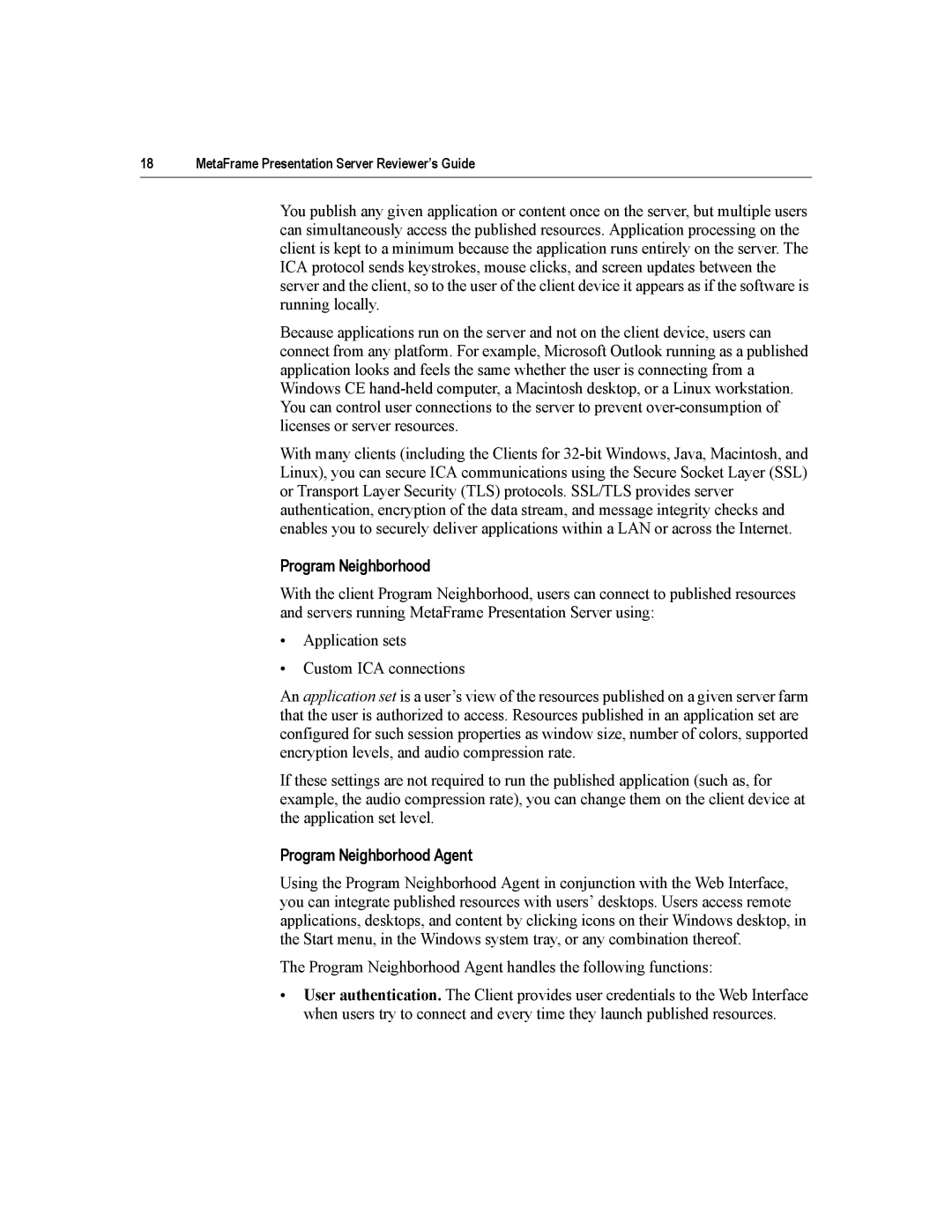18 | MetaFrame Presentation Server Reviewer’s Guide |
You publish any given application or content once on the server, but multiple users can simultaneously access the published resources. Application processing on the client is kept to a minimum because the application runs entirely on the server. The ICA protocol sends keystrokes, mouse clicks, and screen updates between the server and the client, so to the user of the client device it appears as if the software is running locally.
Because applications run on the server and not on the client device, users can connect from any platform. For example, Microsoft Outlook running as a published application looks and feels the same whether the user is connecting from a Windows CE
With many clients (including the Clients for
Program Neighborhood
With the client Program Neighborhood, users can connect to published resources and servers running MetaFrame Presentation Server using:
•Application sets
•Custom ICA connections
An application set is a user’s view of the resources published on a given server farm that the user is authorized to access. Resources published in an application set are configured for such session properties as window size, number of colors, supported encryption levels, and audio compression rate.
If these settings are not required to run the published application (such as, for example, the audio compression rate), you can change them on the client device at the application set level.
Program Neighborhood Agent
Using the Program Neighborhood Agent in conjunction with the Web Interface, you can integrate published resources with users’ desktops. Users access remote applications, desktops, and content by clicking icons on their Windows desktop, in the Start menu, in the Windows system tray, or any combination thereof.
The Program Neighborhood Agent handles the following functions:
•User authentication. The Client provides user credentials to the Web Interface when users try to connect and every time they launch published resources.
